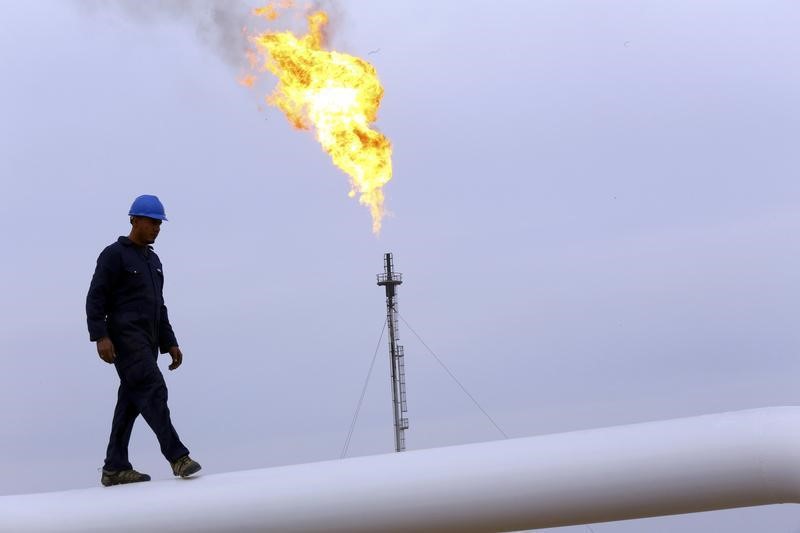Investing.com – Against the bullish mantra of Saudi production cuts, the keeper of U.S. energy data has delivered a volley of its own — a three-year peak for U.S. oil output, estimated in its latest weekly report.
U.S. oil production was at 12.6 million barrels daily during the most recent week to August 4, the EIA said in its Weekly Petroleum Status Report.
The agency had not estimated such a high number for U.S. oil output since the record 13.1 million barrels per day declared prior to the coronavirus outbreak of March 2020. Until a week ago, the EIA had maintained its estimate for U.S. crude production at 12.2 million barrels per day — a figure it barely altered for months.
The EIA’s revision was made all the more significant by the sheer drop this year in U.S. .
Oil services company Baker Hughes said the U.S. rig count stood at 525 during the week to August 4, down from the 2023 high of 623 noted during the week to January 13.
In a separate monthly forecast on Tuesday, the EIA said higher-than-expected well productivity and rising crude prices will help boost US production to a record 12.8 million barrels a day in 2023, up from previously forecast 12.6 million. The United States averaged about 11.9 million barrels per day in oil production last year.
“I’m not sure what the oil bulls will have to say to this,” said John Kilduff, partner at New York energy hedge fund Again Capital. “They’ve been harping like a broken record all year about oil rigs being down and the EIA has been going the opposite way with its oil production estimates, which have now been revised to pre-pandemic highs.”
Oil bulls’ response wasn’t surprising: Meh.
Ignoring the fundamental shift in U.S. oil supply indicated by the EIA, those long the market remained starry-eyed over the pledged Saudi output cuts, sending crude prices to their highest close in nine months.
U.S. West Texas Intermediate, or , crude settled up $1.48, or 1.8%, at $84.40 per barrel, its highest close since November. The session peak was $84.64. Week-to-date, the U.S. crude benchmark showed a gain of 1.7%, adding to its 20% advance over six previous weeks.
settled up $1.38, or 1.6%, at $87.55, after an eight-month high of $87.63 earlier in the session. Brent was up 1.5% on the week, adding to its 17% gain over the past six weeks.
Wednesday’s oil rally also appeared to discount the large build in U.S. crude stockpiles reported by the EIA for last week, after the record drawdown cited by the agency in the week prior.
rose by 5.851M barrels during the week ended Aug. 4, after the historic 17.049-M barrel plunge reported in the prior week to July 28.
Industry analysts had projected a crude stockpile growth of just 0.567M for last week.
A closer examination of the EIA weekly report showed the crude build likely came from a slump in U.S. crude exports, which stood at 2.36M last week compared with the prior week’s 5.283M.
On the front, there was a draw of 2.661M versus the build of 1.48M the week before. It was the first substantial gasoline consumption in five weeks, after a similar reduction of almost 2.6M during the week to July 1. The forecast was for a draw of 0.008M. Automotive fuel gasoline is the No. 1 U.S. fuel product.
With , the decline came in at 1.706M barrels for last week versus the prior week’s draw of 0.796M.
It was the largest weekly draw in distillates since the week ended May 5. Analysts had projected a U.S. distillates build of 0.006M barrels instead for last week. Distillates are refined into , diesel for trucks, buses, trains and ships and fuel for jets.
Read the full article here












